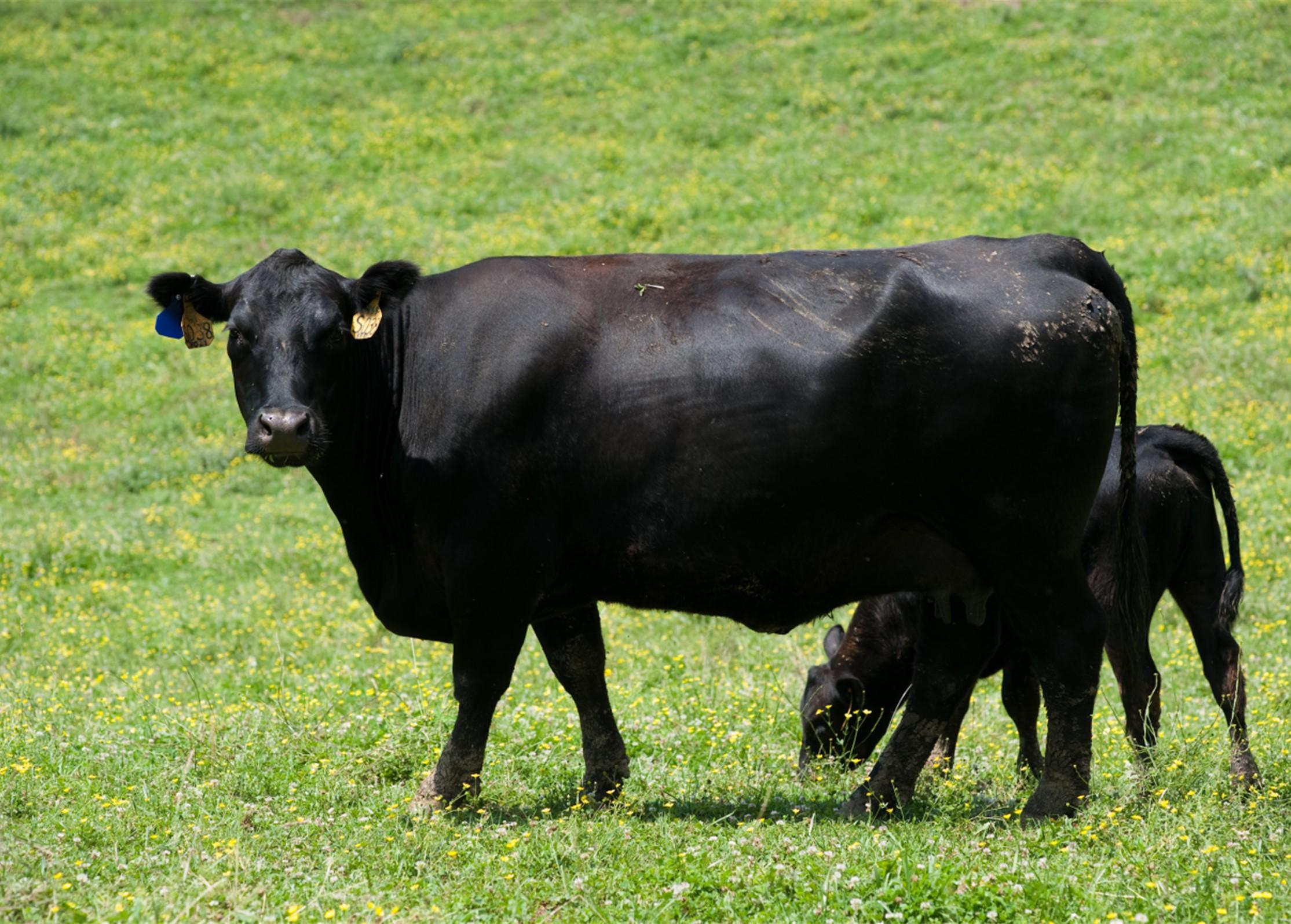Grass Tetany
Grass tetany is a condition that occurs when magnesium levels in the blood and spinal fluid become too low to support normal bodily functions. The occurrence of grass tetany is often isolated to the springtime when cattle are grazing primarily lush, rapidly growing perennial pasture.
Importance of Magnesium
Similar to calcium and phosphorus, magnesium is classified as a macromineral, which means that it is required by the body in large amounts relative to other minerals. Magnesium is required for several metabolic functions in the body, including nerve and muscle function, and is essential for optimal growth and production. There is no true storage of magnesium in the body and most of the body’s magnesium is tied to bone (70%) and muscle (15%) tissue.
Magnesium requirements vary depending on several factors, including age, physiological state, and the amount and availability of the magnesium supplied by the diet. In late pregnancy, a cow requires roughly 7-9 grams of magnesium per day, but this requirement more than doubles to 18-21 grams of magnesium per day during lactation.
Magnesium Deficiency
A magnesium deficiency occurs when the body utilizes more magnesium than is available. This can occur when magnesium intake is insufficient to meet the needs of the animal. Magnesium deficiency can progress rapidly and quickly become life-threatening if not addressed. Early signs include nervousness, reduced feed intake, and muscle twitches, particularly around the face and ears. In the early stages of magnesium deficiency, animals may also walk with a stiff gait or stagger. Animals with advanced magnesium deficiency will lay out on their side with their head extended and have convulsions. Death is likely if treatment is not administered within four to eight hours of symptom onset. Producers should develop a plan with their veterinarian to ensure that they have the appropriate supplies and training necessary to address any emergent cases of grass tetany. Treatment usually consists of intravenous administration of a salt solution containing magnesium.
Risk Factors for Grass Tetany
Cattle rely primarily on consumption of magnesium in the diet to maintain appropriate blood magnesium levels. In calves, a small portion of magnesium can be released from muscle stores, but this ability is lost as the animal matures. The rumen is the main site of dietary magnesium absorption and the efficiency of absorption declines with age. Thus, the risk for developing grass tetany increases with age.
High intake of potassium, nitrogen, calcium, and phosphorus can interfere with magnesium absorption or utilization and effectively reduce the amount that is usable by the animal. This is problematic because lush, rapidly growing forages tend to contain high levels of many of these nutrients, which is the primary reason why grass tetany occurs during rapid spring growth. Additionally, high soil concentrations of nitrogen and potassium decrease magnesium uptake by plants, which can further reduce overall magnesium intake by animals. These factors, combined with the increased magnesium requirement by early lactation cows, contribute to the elevated grass tetany risk during the spring season.
Prevention of Grass Tetany
There are several approaches that can be used to mitigate the risk for grass tetany. The most common strategy is to provide supplemental magnesium in the diet through a mineral supplement. This can be accomplished by adjusting the daily mineral to supply additional magnesium. During the high-risk period for grass tetany, provision of 0.6 oz of magnesium per head per day is recommended to help prevent magnesium deficiency. Because magnesium oxide is ~60% magnesium, 1 oz per head per day is necessary to meet this recommendation. However, because magnesium oxide is not palatable, it should be fed with a palatable carrier, like grain. Alternatively, a complete, high-magnesium mineral that contains 8-10% magnesium can also be fed free-choice. These supplements should be fed throughout the spring, starting several days before turnout to high-risk pastures. Loose forms of mineral are preferred over blocks.
In addition to mineral supplementation, there are several pasture-related strategies that can also help reduce risk. If possible, avoid grazing pastures until they are at least 6” tall during the spring season as magnesium tends to be less available in immature plants. Legumes tend to be higher in magnesium than grasses, so their incorporation into the pasture can help offset the lower magnesium content in less mature, rapidly growing cool-season grasses in the spring. Studies show that high nitrogen and potassium fertilizers are associated with grass tetany, so paying close attention to fertilizer application during the early spring is also important for assessing the grass tetany risk level of a field.
To that end, avoid grazing high-risk animals on high-risk fields. High-risk animals include late-pregnant and early lactation cows, while high-risk fields are those that contain vegetative, cool-season perennial grasses, have recently received fertilizer, and/or contain few legumes. Finally, it is important to remember that even with the best prevention strategies there is no substitute for frequent, close observation of animals. Because grass tetany advances rapidly, early detection is essential to avoid death loss.
Prevention is the best approach when it comes to managing grass tetany and a combination of mineral supplementation and pasture management can help mitigate risk. However, even with the best prevention plan, producers should work with their veterinarian to develop a protocol to treat cases of grass tetany that emerge during the season.
